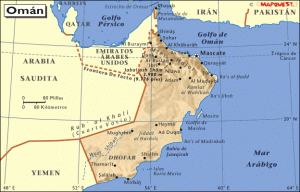Oman, a country blessed with abundant sunshine, has immense potential to harness solar power as a sustainable energy source. With the global shift towards renewable energy, the Sultanate is increasingly focusing on solar power to diversify its energy mix and reduce its dependence on fossil fuels. This transition is not only crucial for the nation’s economic growth but also for addressing environmental concerns and ensuring energy security.
The government of Oman has recognized the importance of renewable energy and has set ambitious targets to increase its share in the total energy mix. The Oman Vision 2040, a long-term development plan, aims to generate 30% of the country’s electricity from renewable sources by 2030. To achieve this goal, the government has established the Oman Power and Water Procurement Company (OPWP), which is responsible for implementing renewable energy projects and encouraging private sector participation.
One of the most significant solar power projects in Oman is the Ibri II Solar Independent Power Project (IPP), which is currently under construction. This 500-megawatt (MW) solar power plant, located in the Al Dhahirah Governorate, is expected to be operational by 2022. Once completed, it will be the largest utility-scale solar power plant in the country, generating enough electricity to power around 33,000 homes and reducing carbon emissions by approximately 340,000 tons per year.
Furthermore, the government is actively promoting rooftop solar installations through the Sahim initiative, which encourages residential, commercial, and industrial consumers to install solar panels on their rooftops and sell the excess electricity back to the grid. This initiative not only helps in reducing the burden on the national grid but also provides an additional source of income for the consumers.
In addition to these large-scale projects, Oman is also exploring innovative solar power technologies to maximize the efficiency of solar energy production. One such technology is the Concentrated Solar Power (CSP) system, which uses mirrors or lenses to concentrate sunlight onto a small area, generating heat that can be used to produce electricity. The country’s first CSP project, the Miraah solar thermal facility, is currently under development and is expected to be one of the largest CSP plants in the world upon completion.
The private sector is also playing a crucial role in driving Oman’s solar power growth. Several local and international companies are investing in solar power projects, creating a competitive market and fostering innovation. This collaboration between the public and private sectors is essential for the rapid development of solar power infrastructure in the country.
However, despite the significant progress made in recent years, there are still challenges that need to be addressed to fully realize Oman’s solar power potential. One of the primary concerns is the high upfront cost of solar power installations, which can be a deterrent for potential investors and consumers. To overcome this hurdle, the government is offering various incentives and financing options to make solar power more accessible and affordable.
Another challenge is the lack of skilled workforce and technical expertise in the renewable energy sector. To bridge this gap, Oman is focusing on capacity building and knowledge transfer through collaborations with international institutions and organizations. This will not only help in developing a skilled workforce but also create job opportunities in the renewable energy sector.
In conclusion, Oman’s solar power potential is immense, and the country is making significant strides towards harnessing the sun’s energy. With the right policies, investments, and collaborations, Oman can become a regional leader in solar power generation and contribute to a sustainable and secure energy future.


